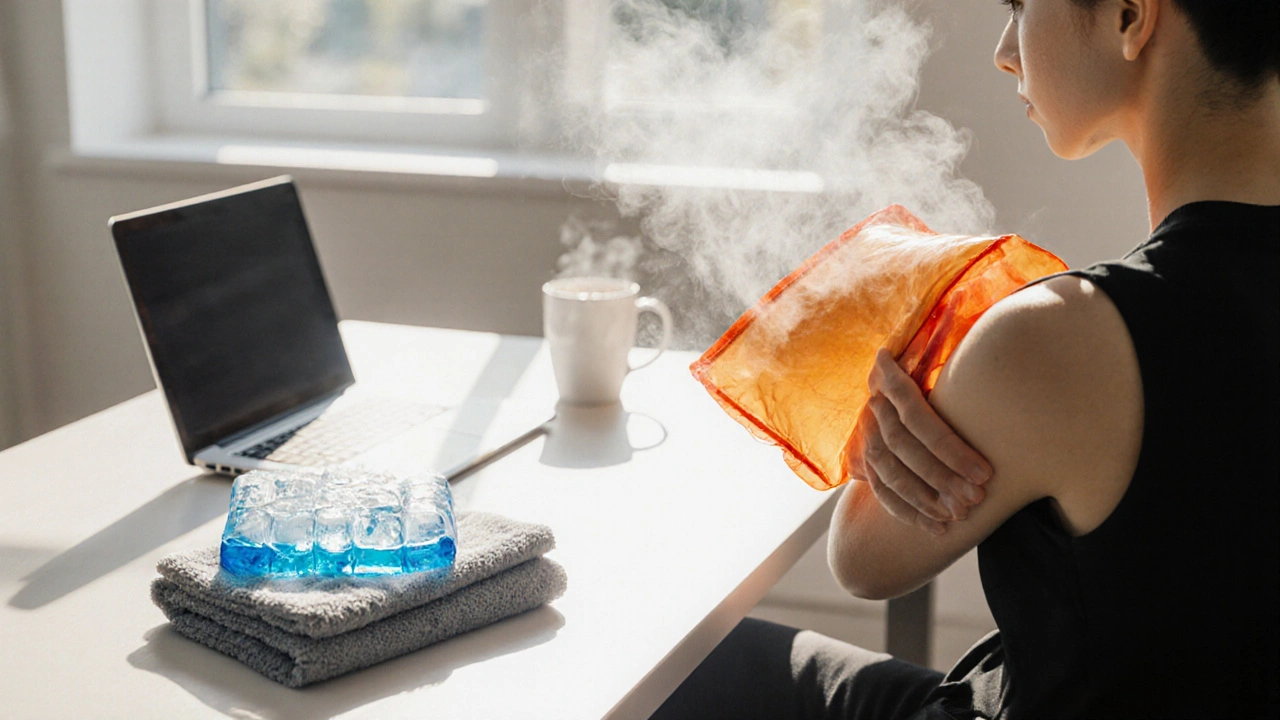Cold Therapy
When you hear Cold Therapy, the practice of applying low temperatures to the body to reduce pain, swelling, and speed up healing. Also known as cryotherapy, it helps manage inflammation and muscle soreness. you probably think of athletes icing sore knees or patients getting a chilly treatment in a clinic. In reality, cold therapy covers a range of simple home tricks and high‑tech sessions, all built on the same principle: lower temperature slows down the body's inflammatory response and numbs pain signals.
One of the most accessible forms is Ice Pack Therapy, a method that uses frozen gel packs, cloth‑wrapped ice cubes, or even a bag of peas to cool a specific spot. The key attribute here is duration—typically 10‑20 minutes per session—to avoid tissue damage. Another popular variant is whole‑body Cryotherapy, where a chamber blasts air at –100°C or lower for a few minutes. This high‑intensity approach claims faster systemic benefits, such as reduced systemic inflammation and a boost in endorphin release.
How Cold Therapy Works
Cold therapy reduces Inflammation, the body's natural response to injury that can cause swelling, redness, and pain by constricting blood vessels (vasoconstriction). When you remove the cold source, the vessels dilate, flushing out metabolic waste and delivering fresh nutrients—this rebound effect supports Muscle Recovery, the process by which damaged fibers repair and become stronger. In practical terms, a sprained ankle treated with an ice pack for 15 minutes after activity often swells less and regains range of motion quicker than one left untreated.
From a safety standpoint, the main attributes to watch are temperature and skin contact time. For home use, aim for a cold pack temperature of 0–5°C and never apply directly to bare skin—always wrap in a thin towel. For cryotherapy chambers, reputable clinics monitor exposure time and screen for contraindications like uncontrolled hypertension or certain cardiovascular conditions.
Cold therapy isn’t just for sports injuries. Chronic conditions such as osteoarthritis, tendonitis, and even migraine attacks can benefit from targeted cooling. Studies show that applying a cold compress to a migraine‑prone temple can shorten attack duration by up to 30%. Similarly, a 2023 clinical trial found that daily 10‑minute cryotherapy sessions lowered rheumatoid arthritis pain scores by 20% over six weeks.
If you’re new to cold therapy, start simple. Grab a commercial gel pack, place it in the freezer for an hour, then wrap it in a cloth and press it to the sore area. Track how you feel: note pain levels before, during, and after. Over a week, you’ll see patterns—some spots respond within minutes, others need repeated sessions.
For those seeking a more intense routine, look into local cryotherapy centers. Ask about chamber temperature, session length, and any required health questionnaires. Many facilities offer a “starter package” that includes a short introductory session and a discounted follow‑up schedule.
Whether you’re a weekend warrior, a desk‑bound professional, or someone coping with a chronic ache, integrating cold therapy into your self‑care can cut down swelling, calm pain, and speed the healing cycle. Below you’ll find a curated collection of articles that dive deeper into specific techniques, safety tips, and the science behind each method.
Heat vs Cold Therapy: Fast Relief for Muscle Ache
Learn when to use heat or cold therapy for muscle aches, how each works, safe application tips, and quick home remedies for fast relief.
© 2025. All rights reserved.

